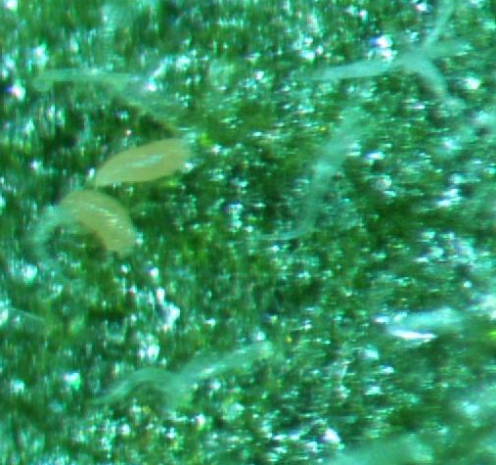Hemp and russet mites are two of the pests that growers face nowadays that are particularly destructive and challenging to eradicate. A great number of species are host-specific and favor monocultural growth environments. Russet mites are difficult to see and reproduce quickly, but they lack the distinct webbing that distinguishes them from spider mites. They are mites from the Eriophyidae family that normally invade unseen and can amass a sizable population before harm symptoms become apparent.
Sanitation is essential in contaminated regions since these tiny insects can hitch rides to new locations on clothing, in cleared garbage, and even on other nuisance insects like aphids. Mite populations explode in hot, dry, windless weather, although they only feed on plants in protected, humid environments.
An incredibly tiny insect known as a russet mite frequently destroys cannabis plants. With human sight alone, these pests are invisible. Russet mites are difficult to identify until plants are severely damaged. The tomato mite is closely related to the russet mite, which is why both names are used interchangeably. They both belong to the family Eriophyidae.
Russet Mites Damage
Mites are cellular sap-suckers that feed on living things. Damage often starts at a plant’s base and progresses upward as it feeds. Yellowing and curling of lower leaves, leaf drooping, and discoloration of the stem are all signs of plant stress. Green growth and blooming slow down as the plant’s nutrients are sucked away. Little mites, in greater numbers, quickly colonized the entire plant.
A plant can be completely drained if mites are allowed to go unchecked. For cannabis plants still in their vegetative state, mite damage manifests as a gradual yellowing of the leaf margins that eventually reach the midrib. As the damage gets worse, the leaves start to look burned and necrotic. The leaves appear stunted, wrinkly, and coarse. These patterns are frequently mistaken for viruses, burnt fertilizer, or nutrient deficiencies.
The premature death of the plant’s pistils and the darkening of the flower buds are both caused by the russet mite. At the beginning of the flowering stage, the pistils have a light, lively color and are somewhat lengthy. When there is an infestation, the buds get smaller and turn brown.
Russet Mites Eggs
In the spring, russet mites lay transparent, spherical eggs. Following the hatching of their eggs, russet mites undergo two nymphal stages that mimic adulthood. It takes anywhere from eight to fifteen days to reach maturity, depending on the surroundings. When grouped, the adults look yellow and are very small. They have only two sets of legs, making them distinct from many other types of mites. The females spend the winter both within the stems of the damaged plants and at the joints of the plants. Mites complete their life cycle in just 8 days in conditions of high heat and humidity, producing many generations that overlap with one another throughout a single season.
Russet Mites Treatment
Preventative measures are the most effective forms of pest control for producers working both indoors and outdoors. For early detection, it is essential to often and carefully inspect the plants, especially the areas surrounding the leaves that are closest to the soil line outside or anywhere a plant is in bloom.
Russet mites can easily be the cause of what could seem to be magnesium and an iron shortage. In cases when there is uncertainty, it is best to alter the nutrient solutions or amend the soil, in addition to treating mites. Once the mites start producing eggs, finding and eliminating them within their first generation, which can last as little as a week under the correct circumstances, can stop a cascade of generations.
The introduction of beneficial nematodes at the onset of warmer soil temperatures and before planting can aid in the destruction of soil-based eggs and newly-hatched nymphs. If damage to the lowest leaves is noticed, the second application of nematodes delivered by vermiculite is advised. Despite the plants’ importance, a serious infestation may require discarding them. After thorough treatment, new plants can be planted. It is necessary to identify the source of the mite infestation to prevent the young plants from becoming contaminated.



